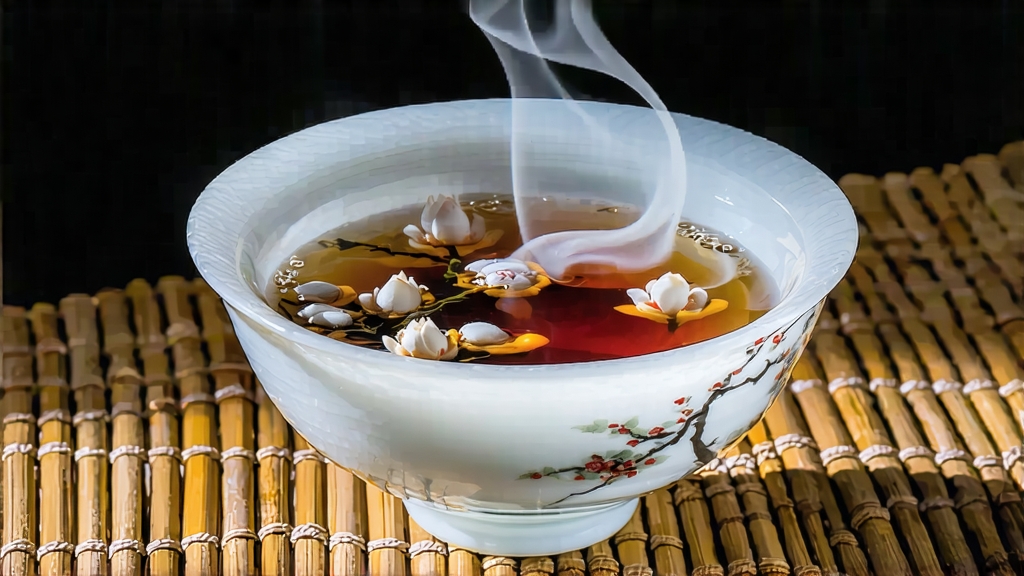
Bai Hao Yin Zhen, often translated as “Silver Needle,” is the most aristocratic expression of China’s white-tea family. To the uninitiated it may look like a jar of tiny ivory knitting pins, but to the Chinese tea mind these plump, down-cloaked buds are springtime captured in suspended animation. Their story begins in the coastal mountains of northeast Fujian, where the Min River bends toward the East China Sea and the white haze of March clings to the camellia gardens like a silk scarf. Here, around the counties of Fuding and Zhenghe, two landraces of the tea plant—Fuding Da Bai and Zhenghe Da Bai—have evolved unusually large, tippy shoots whose pubescent surface acts as a natural sunscreen against the maritime glare. When the first true leaf is still folded inside its protective scale, the bud is snipped off with thumbnail precision, leaving behind any hint of verdant foliage. What arrives in the wicker baskets is nothing but pale spears of potential flavor, a minimalist gesture that will never be rolled, never be pan-fired, never be twisted; it will only be allowed to wither and to dry.
Historians usually credit the commercial birth of Silver Needle to the late Qing dynasty, when the port of Fuzhou exported small lots of “foreign tribute tea” to European apothecaries who prized its visual delicacy and rumored cooling properties. Yet folk memory pushes the timeline further back, claiming that Buddhist monks on Taimu Mountain were air-drying buds for medicinal draughts as early as the Song. Whatever the century, the critical insight was the same: minimal intervention preserves the highest concentration of amino acids and volatile terpenes, yielding a liquor that tastes less like “tea” in the tannic sense and more like the breeze that carries pear blossom, river reeds and wet stone.
The modern classification system recognizes three grades of white tea—Silver Needle, White Peony (Bai Mu Dan) and Longevity Eyebrow (Shou Mei)—but among connoisseurs the needle remains the apex. Within the needle category itself, however, micro-terroirs and harvest windows create a silent hierarchy. The earliest spring picking, known as “first flush” and completed before the Qingming festival, delivers buds still winter-dormant, rich in L-theanine and low in catechin bitterness. A fortnight later the same bushes will produce a slightly greener, less downy shoot that still qualifies as Silver Needle but lacks the creamy thickness prized by collectors. Finally, there is the autumnal “cold needle,” picked in late October when cool nights lengthen the withering cycle and imprint a faint orchid note. Each version carries the same name, yet cup side by side they speak in different dialects of minerality and muscatel.
Craft begins the moment the bud is detached from the stem. Pickers slide their harvest into shallow bamboo trays lined with hemp cloth, taking care not to compress the pile, because any bruise will oxidize into an unsightly chestnut splotch. The trays are then ferried to a withering loft whose walls are made of adobe brick punched with lattice holes; the design allows the mountain’s nocturnal chill to mingle with daytime sunshine, creating a diurnal temperature swing of up to 15 °C. For thirty-six to forty-eight hours the buds rest in this breathing chamber, losing moisture in slow motion while endogenous enzymes convert starches into soluble sugars. Masters gauge readiness not by stopwatch but by the “three-finger test”: a bud pressed between thumb and forefinger should bend like a fresh noodle, springing back without snapping, while its surface turns from silvery green to the color of antique ivory. Once the leaf cells have reached this liminal state, the trays are transferred to a gentle charcoal oven fired by longan-wood embers kept below 40 °C. The goal is not to bake but to “set the soul,” locking in the bouquet that withering has coaxed forth. A veteran dryer can tell by ear when the buds are done: they rustle like powdered snow when shaken, yet remain cool to the touch.
Because Silver Needle undergoes no fixing or rolling, its cell structure stays almost intact; this anatomical innocence is what gives the tea its famously subtle character, but it also demands restraint in the brew chamber. The international impulse to “get flavor out” by using boiling water